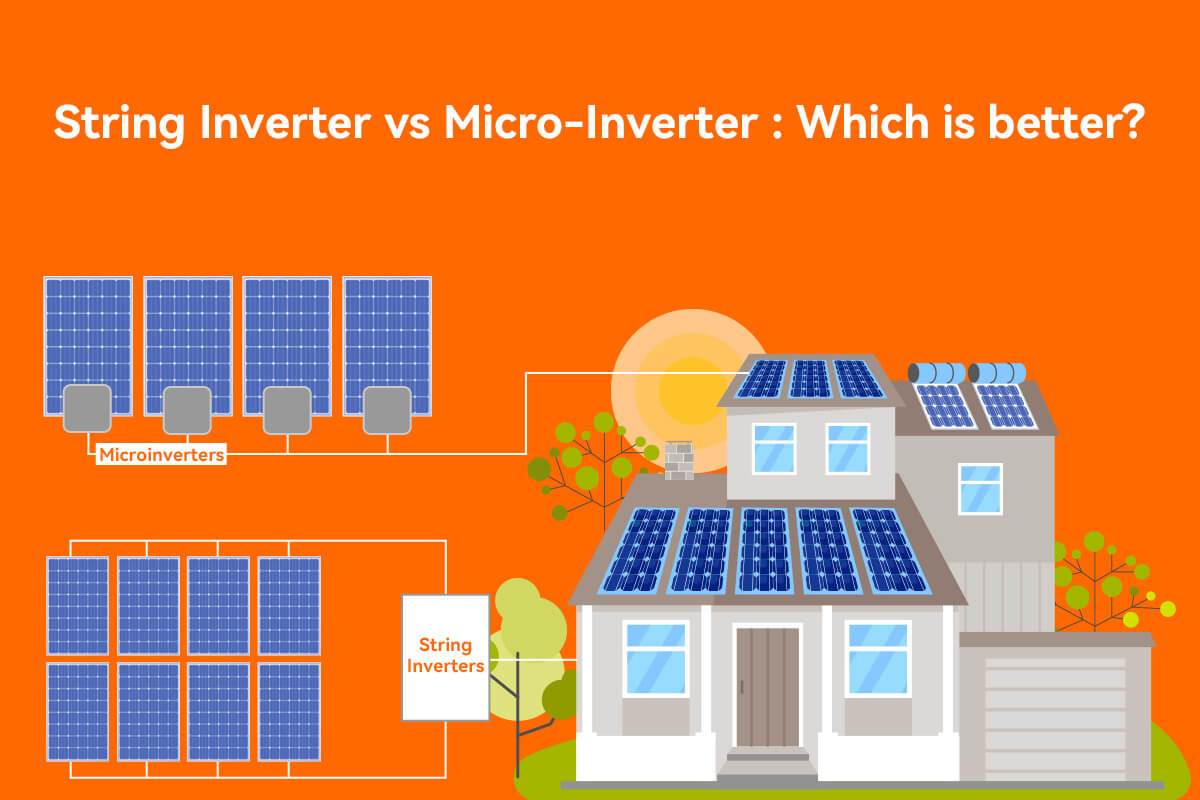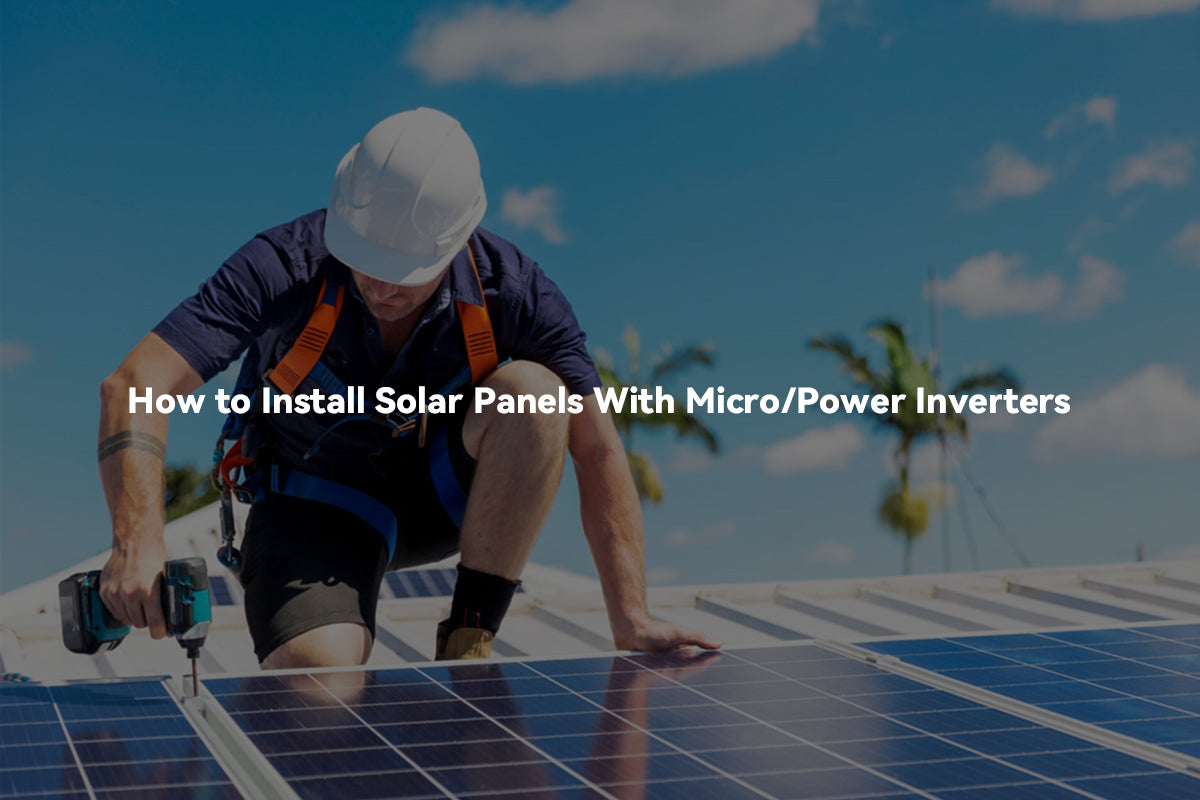ระบบจัดเก็บพลังงานประกอบด้วยอุปกรณ์ที่ควบคุม การนำเข้า/ส่งออกและการแปลง/จัดเก็บพลังงาน กระบวนการนี้มักเกี่ยวข้องกับพลังงานหลายประเภท อุปกรณ์ สาร และกระบวนการ ซึ่งเป็นระบบพลังงานที่ซับซ้อนที่เปลี่ยนแปลงตามเวลา ต้องการตัวชี้วัดหลายตัวในการตรวจสอบประสิทธิภาพของมัน.
สำหรับวิธีการที่ใช้ในการเก็บพลังงาน ระบบเก็บพลังงานที่มีอยู่ในปัจจุบันแบ่งออกเป็น 5 ประเภทหลัก: แบตเตอรี่, ความร้อน, กลไก, น้ำที่สูบขึ้น และไฮโดรเจน.
เมื่อเปรียบเทียบกับวิธีการจัดเก็บพลังงานอื่น ๆ ระบบจัดเก็บพลังงานแบตเตอรี่ (BESS) เหมาะสมกว่าสำหรับการใช้งานในเครื่องใช้ไฟฟ้าที่บ้าน โดยมีข้อดีคือ ความปลอดภัย เทคโนโลยีที่พัฒนาแล้ว การติดตั้งง่าย และไม่มีมลพิษ.
ระบบจัดเก็บพลังงานแบตเตอรี่คืออะไร
แบตเตอรี่เป็นรูปแบบการจัดเก็บที่เก่าแก่ที่สุด เป็นที่นิยมมากที่สุด และมีให้บริการอย่างแพร่หลาย และ ระบบจัดเก็บพลังงานแบตเตอรี่ (BESS) ใช้แบตเตอรี่ในการ จัดเก็บและกระจายพลังงานในรูปแบบของพลังงานไฟฟ้า พลังงานจะถูกเก็บจากกริดหรือจากแหล่งพลังงานหมุนเวียน (เช่น พลังงานแสงอาทิตย์และพลังงานลม) และจัดเก็บโดยใช้เทคโนโลยีอิเล็กโตรเคมี แบตเตอรี่จะถูกปล่อยพลังงานออกมาเมื่อจำเป็น (ในช่วงเวลาที่มีความต้องการสูง การขัดข้องของพลังงาน และการใช้งานอื่น ๆ).
ตามที่ได้กล่าวไว้ข้างต้น พลังงานจากการจัดเก็บแบตเตอรี่ส่วนใหญ่จะมาจากกริด พลังงานแสงอาทิตย์ และพลังงานลม ด้วยความนิยมของการผลิตพลังงานจากเซลล์แสงอาทิตย์ พลังงานแสงอาทิตย์จึงกลายเป็นวัตถุหลักของการจัดเก็บพลังงานจากแบตเตอรี่ ตามองค์ประกอบของระบบ ระบบจัดเก็บพลังงานจากแบตเตอรี่สามารถแบ่งออกเป็นระบบจัดเก็บพลังงานที่เชื่อมต่อกับกริด ระบบจัดเก็บพลังงานที่เชื่อมต่อกับกริด/ไม่เชื่อมต่อกับกริด ระบบจัดเก็บพลังงานที่ไม่เชื่อมต่อกับกริด และระบบจัดเก็บพลังงานไมโครกริด.
ต่อไป เราจะใช้การจัดเก็บพลังงานแบบออฟกริดเป็นตัวอย่างเพื่อแนะนำระบบการจัดเก็บแบตเตอรี่.
ระบบจัดเก็บพลังงานแบตเตอรี่ในบ้าน
ระบบจัดเก็บพลังงานแสงอาทิตย์แบบออฟกริดประกอบด้วยการผลิตพลังงานจาก PV, ตัวควบคุม, แบตเตอรี่ และอินเวอร์เตอร์ เป็นต้น มันสามารถชาร์จแบตเตอรี่โดยตรงด้วยโมดูล PV เพื่อตอบสนองความต้องการของการใช้ไฟฟ้า ส่วนประกอบหลักคือ ตัวควบคุมที่ ชาร์จแบตเตอรี่ และอินเวอร์เตอร์แบบออฟกริดที่ แปลงเฟส DC-AC.
เหมาะสำหรับการติดตั้งในสถานที่ที่มี การขัดข้องของไฟฟ้าบ่อยครั้งหรือการจ่ายไฟฟ้าที่ไม่เสถียร ไม่เพียงแต่สามารถชาร์จได้จากระบบผลิตไฟฟ้าจากพลังงานแสงอาทิตย์ แต่ยังสามารถชาร์จได้จากไฟฟ้าปกติเมื่อกริดมีพลังงานเพื่อรับประกันการจ่ายไฟ
ระบบจัดเก็บพลังงานแบตเตอรี่เชิงอุตสาหกรรม/เชิงพาณิชย์
ระบบจัดเก็บพลังงานแบตเตอรี่ลิเธียมเกรดอุตสาหกรรมแบ่งออกเป็น ระบบจัดเก็บพลังงานแบบตู้ และ ระบบจัดเก็บพลังงานแบบตู้คอนเทนเนอร์ ตามรูปแบบการติดตั้ง.
ในหมู่พวกเขา ระบบจัดเก็บพลังงานตู้แบตเตอรี่ลิเธียมยังเป็นที่รู้จักในชื่อ ตู้เก็บแบตเตอรี่ลิเธียม ผลิตภัณฑ์นี้มักใช้แบตเตอรี่ลิเธียมเหล็กฟอสเฟตเป็นตัวเก็บพลังงาน กำลังไฟมากกว่า 6200Wh การชาร์จและการปล่อยพลังงานผ่าน PCS ใช้เพียงเพื่อการจัดเก็บภายนอกและการจ่ายพลังงานเท่านั้น.
PowMr ระบบจัดเก็บพลังงานแบบครบวงจร
แม้ว่าระบบจัดเก็บพลังงานสำหรับครัวเรือนจะง่ายกว่าระบบจัดเก็บพลังงานอุตสาหกรรม แต่การติดตั้งระบบและการเชื่อมต่อระหว่างส่วนประกอบต่างๆ ก็ยังเป็นขั้นตอนที่ค่อนข้างยุ่งยากและไม่เอื้อต่อการทำความสะอาดและบำรุงรักษาในชีวิตประจำวัน ดังนั้น เครื่องชาร์จอินเวอร์เตอร์ จึงค่อยๆ ปรากฏขึ้นในฐานะอุปกรณ์ที่รวมฟังก์ชันของตัวควบคุมและอินเวอร์เตอร์ไว้ในหนึ่งเดียว.
อย่างไรก็ตาม เราขอแนะนำอุปกรณ์เก็บพลังงานที่ง่ายกว่า: PowMr ESS ระบบเก็บพลังงานแบบรวมทุกอย่าง ซึ่งรวมการเก็บพลังงานจากแบตเตอรี่ลิเธียมบนพื้นฐานของเครื่องชาร์จอินเวอร์เตอร์.

ไฮไลท์:
-
ทั้งหมดในหนึ่งการออกแบบ
ระบบจัดเก็บพลังงานนี้มาพร้อมกับ 6.2KW อินเวอร์เตอร์, เครื่องชาร์จพลังงานแสงอาทิตย์ และ แบตเตอรี่ลิเธียมเหล็กฟอสเฟตขนาด 5kwh สองก้อน ติดตั้งง่าย ประหยัดพื้นที่ รูปลักษณ์เรียบง่าย และไม่สะสมฝุ่นได้ง่าย.
-
ระบบสื่อสาร BMS
ติดตั้งด้วย แบตเตอรี่ LiFePO4 2 ก้อน (5kWh, 6000 ครั้ง 80% DoD) รองรับการเชื่อมต่อ แบตเตอรี่ 4 ก้อนขนาน พร้อมกันเพื่อให้ พลังงานสูงสุด 20kwh สำหรับการใช้งาน.
-
6200W อินเวอร์เตอร์ออฟกริด
รองรับการส่งออกคลื่นไซน์บริสุทธิ์ แปลง48V DC เป็น 220V AC ส่งออก120A MPPT คอนโทรลเลอร์โซลาร์เซลล์MAX 500V PV อินพุต เหมาะสำหรับอุปกรณ์ในบ้าน เครื่องมือไฟฟ้า และโหลด AC อื่นๆ.
-
โหมดการทำงานหลายโหมด
โหมดการชาร์จหลายโหมด คุณสามารถชาร์จด้วยเครื่องกำเนิดไฟฟ้า, พลังงาน PV, พลังงานจากกริด และคุณสามารถตั้งค่าลำดับความสำคัญของการใช้พลังงานได้
ส่วนประกอบของระบบจัดเก็บพลังงานแบตเตอรี่
การออกแบบระบบจัดเก็บพลังงานแบตเตอรี่ในบ้านต้องพิจารณาปัจจัยหลายประการ นอกจากนี้ยังรวมถึงระบบจัดเก็บพลังงานในอุตสาหกรรมด้วย
ที่นี่เราไม่ลงรายละเอียดเกี่ยวกับการออกแบบระบบจัดเก็บพลังงาน แต่จะอธิบายโดยย่อเกี่ยวกับองค์ประกอบของระบบจัดเก็บแบตเตอรี่ที่มีระบบจัดเก็บพลังงานแบบออฟกริด.
-
เครื่องกำเนิดไฟฟ้า
แผงโซลาร์เซลล์เป็นอุปกรณ์เซมิคอนดักเตอร์ที่มีลักษณะการแปลงแสงเป็นไฟฟ้า ประจุไฟฟ้าฟรีสามารถถูกสร้างขึ้นภายในเซมิคอนดักเตอร์ ซึ่งจะเคลื่อนที่ในทิศทางที่กำหนดและสะสมตัว ทำให้เกิดศักย์ไฟฟ้าที่ปลายทั้งสองของมัน และสร้างกระแสไฟฟ้าเมื่อปลายทั้งสองถูกปิดด้วยตัวนำ.
-
ผู้ควบคุม
อุปกรณ์ควบคุมอัตโนมัติที่ใช้ในระบบการผลิตพลังงานจากแสงอาทิตย์เพื่อควบคุมแผงโซลาร์เซลล์หลายชุดเพื่อชาร์จแบตเตอรี่และจ่ายพลังงานให้กับโหลดอินเวอร์เตอร์โซลาร์.
-
อินเวอร์เตอร์
อินเวอร์เตอร์เป็นอุปกรณ์ที่แปลงพลังงานกระแสตรง (แบตเตอรี่) เป็นกระแสสลับ หลังจากขั้นตอนนี้ เครื่องใช้ในบ้านสามารถรับไฟฟ้าเพื่อทำงานได้อย่างถูกต้อง.
-
แบตเตอรี่
งานหลักของชุดแบตเตอรี่คือการเก็บพลังงานเพื่อให้แน่ใจว่ามีกำลังไฟฟ้าในเวลากลางคืนหรือในวันที่ฝนตก แบตเตอรี่ทั่วไปประกอบด้วย แบตเตอรี่ตะกั่ว-กรด, แบตเตอรี่ลิเธียม-ไอออน, แบตเตอรี่โซเดียม-กำมะถัน และแบตเตอรี่ฟลูว์.
ในบรรดาแบตเตอรี่เหล่านี้ แบตเตอรี่ลิเธียมถูกใช้งานอย่างแพร่หลายมากขึ้น และเป็นแบตเตอรี่ประเภทหนึ่งที่มีลิเธียมเมทัลหรือโลหะผสมลิเธียมเป็นวัสดุขั้วบวก และใช้สารอิเล็กโทรไลต์ที่ไม่ใช่น้ำ จำนวนรอบการชาร์จสามารถมากกว่า 5000 รอบได้ การตอบสนองรวดเร็ว และเป็นแบตเตอรี่ที่มีประสิทธิภาพพลังงานสูงสุดในกลุ่มแบตเตอรี่.
ระบบจัดเก็บพลังงานแบตเตอรี่ทำงานอย่างไร
เมื่อกริดทำงานตามปกติ อินเวอร์เตอร์สามารถเชื่อมต่อไฟฟ้าจากระบบสาธารณูปโภคไปยังโหลดได้โดยตรง และในขณะเดียวกันจะแปลงไฟฟ้ากระแสสลับเป็นไฟฟ้ากระแสตรงและชาร์จแบตเตอรี่ และรับประกันว่าแบตเตอรี่จะหยุดชาร์จโดยอัตโนมัติเมื่อชาร์จเต็มแล้ว.
เมื่อกริดดับไฟ อินเวอร์เตอร์ชาร์จจะตัดการเชื่อมต่อระหว่างสาธารณูปโภคและโหลดโดยอัตโนมัติ เริ่มต้นอินเวอร์เตอร์ทันที และจ่ายไฟให้กับโหลดจากแบตเตอรี่ผ่านอินเวอร์เตอร์แทน
ประโยชน์ของระบบจัดเก็บพลังงานแบตเตอรี่มีอะไรบ้าง
-
การใช้พลังงานส่วนเกินอย่างคุ้มค่า ที่ผลิตจากแหล่งพลังงานหมุนเวียน เช่น พลังงานลมและพลังงานแสงอาทิตย์.
-
พลังงานส่วนเกินที่ผลิตจากแหล่งพลังงานหมุนเวียน เช่น ฟาร์มพลังงานแสงอาทิตย์หรือพลังงานลม สามารถเก็บรักษาไว้ได้ เพื่อให้มั่นใจว่าพลังงานยังคงมีอยู่ใน กรณีที่เกิดความล้มเหลวของกริดหรือสภาพอากาศที่รุนแรง ตัวอย่างเช่น.
-
ช่วยในการกระจายโหลดและสนับสนุนกริดเพื่อช่วยปรับสมดุลความผันผวนของความต้องการพลังงานตลอดทั้งวันและลดความแออัดบนกริด.
-
BESS สามารถปรับปรุงคุณภาพพลังงานโดยการทำให้การเปลี่ยนแปลงแรงดันไฟฟ้าราบรื่น ซึ่งอาจทำให้การทำงานของอุปกรณ์หยุดชะงักได้
-
BESS ติดตั้งง่ายและเป็นตัวเลือกที่ดีที่สุดสำหรับผู้ใช้ที่ไม่คุ้นเคยกับระบบจัดเก็บพลังงาน.



